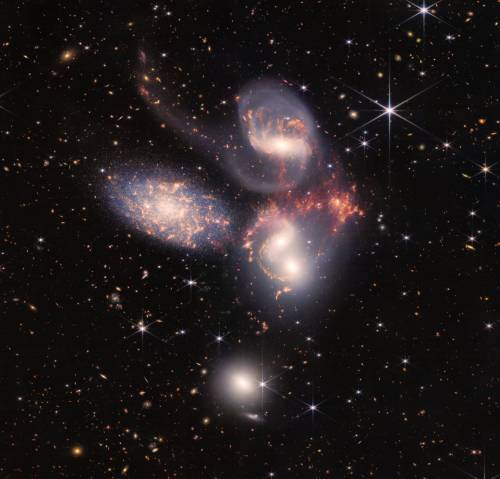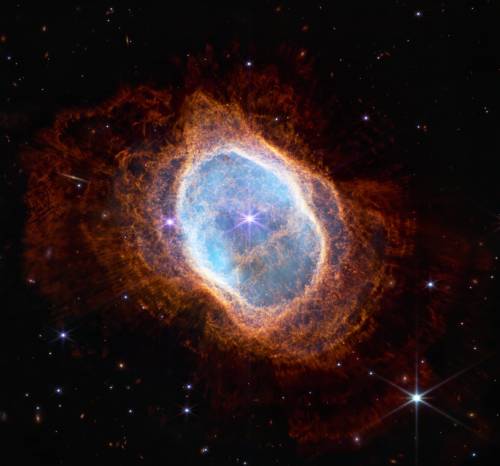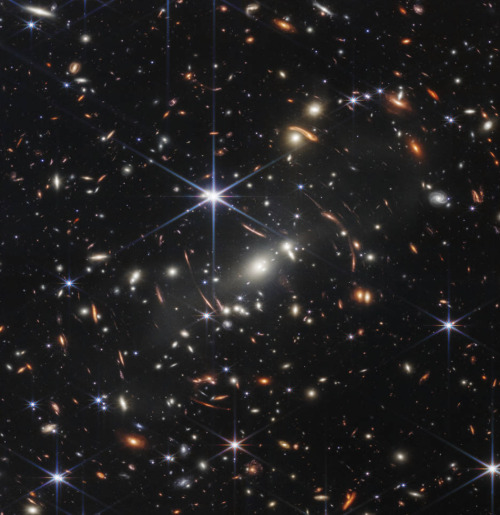Starlost - Space Fucks

More Posts from Starlost and Others
Ten interesting facts about Pluto
Here is a list of some interesting facts about Pluto. A dwarf planet with a very different geology than previously thought, and despite being a small celestial body - Pluto has its own moons.

Pluto was known as the smallest planet in the solar system and the ninth planet from the sun until it was reclassified by the International Astronomical Union in 2006.

Today, Pluto is called a dwarf planet. A dwarf planet orbits the sun just like other planets, but it is smaller. It is large enough for its gravity to pull it into the shape of a ball but it is too small to clear other objects and debris out of its path around the sun.

Pluto was discovered on February 18th, 1930 by the Lowell Observatory. For the 76 years between Pluto being discovered and the time it was reclassified as a dwarf planet it completed under a third of its orbit around the Sun.

On average, Pluto is more than 3.6 billion miles (5.8 billion kilometers) away from the sun. That is about 40 times as far from the sun as Earth is. Pluto orbits the sun in an oval like a racetrack. Because of its oval orbit, Pluto is sometimes closer to the sun than at other times. At its closest point to the sun Pluto is still billions of miles away but is actually closer than Neptune.

This dwarf planet has five moons. Its largest moon is named Charon (KAIR-uhn). Charon is about half the size of Pluto.

Pluto has four other, much smaller, moons. They are named Nix, Hydra, Kerberos, and Styx. They were discovered in 2005, 2005, 2011, and 2012, respectively. NASA’s Hubble Space Telescope took pictures of the new moons. All four are small.

Observations of Pluto’s surface by the New Horizons spacecraft revealed a variety of surface features, including mountains that reach as high as 11,000 feet (3,500 meters), comparable to the Rocky Mountains on Earth. While methane and nitrogen ice cover much of the surface of Pluto, these materials are not strong enough to support such enormous peaks, so scientists suspect that the mountains are formed on a bedrock of water ice.

Pluto’s surface is one of the coldest places in the solar system, at roughly minus 375 degrees Fahrenheit (minus 225 degrees Celsius). When compared with past images, pictures of Pluto taken by the Hubble Space Telescope revealed that the dwarf planet had apparently grown redder over time, apparently due to seasonal changes.

When Pluto is closer to the sun, its surface ices thaw and temporarily form a thin atmosphere, consisting mostly of nitrogen, with some methane.

Pluto’s low gravity, which is a little more than one-twentieth that of Earth’s, causes this atmosphere to extend much higher in altitude than Earth’s.
sources: solarsystem.nasa and space.com
image credit: NASA/JPL - Lowell Observatory Archives

i swear this is my first bot in a while

what if we meet intelligent alien life out there but the novelty eventually wears off and we’re back to “i wonder if we’re alone in the universe or if there’s more than just humans and galorphasians”
![Squidolus [Day:1325 Hour:12]](https://64.media.tumblr.com/3e7fb8bdf7a07b49b24822c993da4474/6a190546615c1cc5-e0/s500x750/e932b6ff6fd560665e9dac1381b0e60eec59d6e7.png)
Squidolus [Day:1325 Hour:12]



NASA’s Webb Space Telescope Reveals Astounding, Unprecedented Views of the Universe

This first image from NASA’s James Webb Space Telescope is the deepest and sharpest infrared image of the distant universe to date. Known as Webb’s First Deep Field, this image of galaxy cluster SMACS 0723 is overflowing with detail. Thousands of galaxies – including the faintest objects ever observed in the infrared – have appeared in Webb’s view for the first time. This slice of the vast universe covers a patch of sky approximately the size of a grain of sand held at arm’s length by someone on the ground.


She should have a statue. Not those confederate MFs.
![Squidolus [Day:1295 Hour:12]](https://64.media.tumblr.com/6e072946d9918d467ef3d47af268fb6c/294259bf49bd7c3a-70/s500x750/e56873c2c38cf388376b1417bb3974f8ed8c496c.png)
Squidolus [Day:1295 Hour:12]
hey, don't cry. comet C/2022 E3 (ZTF) visible to us humans for the first time in 50,000 years before it'll leave us forever, ok?





[source] for all the images
-
 sleepydreameroncloud9 reblogged this · 3 weeks ago
sleepydreameroncloud9 reblogged this · 3 weeks ago -
 mantismusings reblogged this · 1 month ago
mantismusings reblogged this · 1 month ago -
 m-826 liked this · 2 months ago
m-826 liked this · 2 months ago -
 the-way-we-were liked this · 2 months ago
the-way-we-were liked this · 2 months ago -
 umutlarkaranlikk liked this · 3 months ago
umutlarkaranlikk liked this · 3 months ago -
 normandeville reblogged this · 3 months ago
normandeville reblogged this · 3 months ago -
 ciceklervekedilerrr reblogged this · 4 months ago
ciceklervekedilerrr reblogged this · 4 months ago -
 lavandermornings reblogged this · 4 months ago
lavandermornings reblogged this · 4 months ago -
 images-of-all-kinds reblogged this · 4 months ago
images-of-all-kinds reblogged this · 4 months ago -
 mmolia reblogged this · 4 months ago
mmolia reblogged this · 4 months ago -
 moongazinghare1111 liked this · 5 months ago
moongazinghare1111 liked this · 5 months ago -
 kohakudesu reblogged this · 5 months ago
kohakudesu reblogged this · 5 months ago -
 fefur liked this · 5 months ago
fefur liked this · 5 months ago -
 rocketeer-raccoon liked this · 5 months ago
rocketeer-raccoon liked this · 5 months ago -
 togainumochi liked this · 5 months ago
togainumochi liked this · 5 months ago -
 voxvalentine reblogged this · 5 months ago
voxvalentine reblogged this · 5 months ago -
 correlatedcontents reblogged this · 5 months ago
correlatedcontents reblogged this · 5 months ago -
 coalminerscanary reblogged this · 5 months ago
coalminerscanary reblogged this · 5 months ago -
 quantum-light liked this · 5 months ago
quantum-light liked this · 5 months ago -
 iagainsti909 reblogged this · 5 months ago
iagainsti909 reblogged this · 5 months ago -
 waitingroomphoebebridgers liked this · 5 months ago
waitingroomphoebebridgers liked this · 5 months ago -
 wispseeker liked this · 6 months ago
wispseeker liked this · 6 months ago -
 bbysybn reblogged this · 6 months ago
bbysybn reblogged this · 6 months ago -
 malevolent-obsession reblogged this · 6 months ago
malevolent-obsession reblogged this · 6 months ago -
 notthisvirgin liked this · 6 months ago
notthisvirgin liked this · 6 months ago -
 sourcoldblue liked this · 6 months ago
sourcoldblue liked this · 6 months ago -
 jean-pierre-eduardo-1-9 liked this · 6 months ago
jean-pierre-eduardo-1-9 liked this · 6 months ago -
 thenatureofbears reblogged this · 6 months ago
thenatureofbears reblogged this · 6 months ago -
 0anitom0 liked this · 7 months ago
0anitom0 liked this · 7 months ago -
 inmarcesiblematiz liked this · 7 months ago
inmarcesiblematiz liked this · 7 months ago -
 artlolita reblogged this · 7 months ago
artlolita reblogged this · 7 months ago -
 barbiee-girll reblogged this · 7 months ago
barbiee-girll reblogged this · 7 months ago -
 ghostowlattic liked this · 7 months ago
ghostowlattic liked this · 7 months ago -
 mi-lagro liked this · 7 months ago
mi-lagro liked this · 7 months ago -
 kulugurtibul liked this · 7 months ago
kulugurtibul liked this · 7 months ago -
 unravelingsofanarrator liked this · 7 months ago
unravelingsofanarrator liked this · 7 months ago -
 erosmutante reblogged this · 7 months ago
erosmutante reblogged this · 7 months ago -
 jessjmoo liked this · 7 months ago
jessjmoo liked this · 7 months ago -
 yther liked this · 7 months ago
yther liked this · 7 months ago -
 oceans-sand-trees reblogged this · 7 months ago
oceans-sand-trees reblogged this · 7 months ago -
 woven-birds reblogged this · 7 months ago
woven-birds reblogged this · 7 months ago -
 woven-birds liked this · 7 months ago
woven-birds liked this · 7 months ago -
 biitchcakes liked this · 7 months ago
biitchcakes liked this · 7 months ago -
 entriprises reblogged this · 7 months ago
entriprises reblogged this · 7 months ago

andrei, he/him, 21, made this at 14 when i was a space nerd but i never fully grew out of that phase so,,,,..,hubble telescope + alien life + exoplanet + sci fi nerd
245 posts